| Columns Retired Columns & Blogs |
..but I just can't see buying a CD player these days especially one that costs five grand
It's been a long time since we reviewed a CD player that included no digital inputs of any kind, so my measurement of the Hegel Mohican's technical behavior was limited to using 16-bit test files, using both those on CBS CD-1 test disc and those burned to a CD-R. The Mohican's balanced and unbalanced analog outputs were connected to my Audio Precision SYS2722 system (see the January 2008 "As We See It").
The Mohican's error correction was excellent—no glitches were apparent in the player's output until the gaps in the data spiral on the Pierre Verany Digital Test CD reached 1.5mm in length. (The Compact Disc standard, the so-called "Red Book," requires only that a player cope with gaps up to 0.2mm long.) The maximum output level was the same from the balanced and unbalanced outputs, at 2.5V, or 2dB greater than the CD standard's 2V. The output impedance from the balanced outputs was a low 44.5 ohms across the audioband; the unbalanced impedance was half that value, as expected.
Fig.1 shows the Mohican's impulse response; it indicates that the digital reconstruction filter is a minimum-phase type, with all the ringing occurring after the single sample at 0dBFS. Fig.1 also reveals that the Hegel preserves absolute polarity (ie, is non-inverting) from both its unbalanced and balanced outputs, the latter wired with pin 2 of the XLR jack hot. Tested with 44.1kHz-sampled white noise, the Mohican offered a sharp rolloff above the audioband (footnote 1) (fig.2, magenta and red traces), with the aliased image at 25kHz of a full-scale 19.1kHz tone (cyan, blue) suppressed by 100dB. Note also the very low level of harmonic-distortion components in this graph, the second and third harmonics of the 19.1kHz tone each lying below –106dB (0.0005%). A more conventional plot of the Hegel's frequency response (fig.3, blue and red traces) shows nothing untoward, other than a negligible rolloff (–0.25dB) at the top of the audioband. With preemphasized data, however, there is a slight lack of energy in the mid-treble, the depression reaching –0.9dB between 4 and 7kHz. Fortunately, preemphasized CDs are as rare as honest politicians these days.
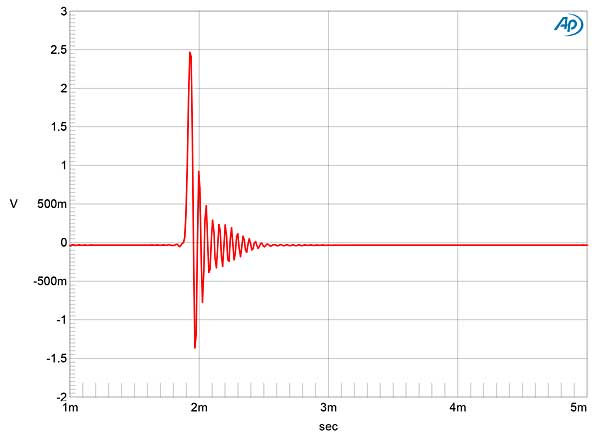
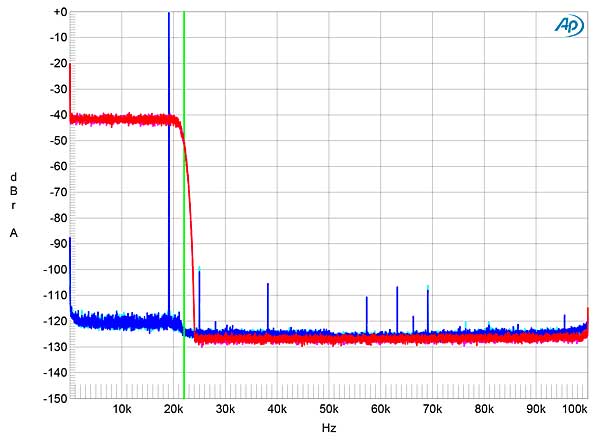
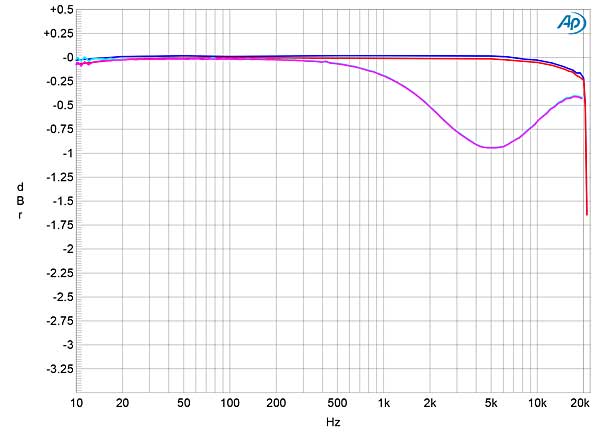
Channel separation (not shown) was superb, at >130dB below 1kHz and still 118dB at 20kHz. Fig.4 shows a spectral analysis of the Hegel Mohican's noise floor while it played 16-bit data representing a full-scale 1kHz tone. The random noise is very low in level, but I was surprised to see spurious tones at 100Hz and its harmonics. With a 60Hz AC supply, it's usual to see low-level spuriae at 120Hz and its harmonics, these stemming from the full-wave–rectified power supply and any residual resistances to ground. But 100Hz-related spuriae? I repeated the test to ensure that I wasn't getting an erroneous reading but got the same results; I am at a loss as to where these spuriae come from (footnote 2). However, it's fair to note that they are all at or below –120dB, and so should be inaudible.

The Mohican's reproduction of a dithered 1kHz tone at –90dBFS (fig.5) revealed very low linearity error; in fact, the noise floor in this graph is the spectrum of the dither used to encode the signal. With so intrinsically low a level of random noise, the Hegel accurately reproduced an undithered tone at precisely –90.31dBFS (fig.6), with the three DC voltage levels described by the data clearly defined, the waveform symmetrical, and the minimum-phase ringing of the reconstruction filter plainly evident.
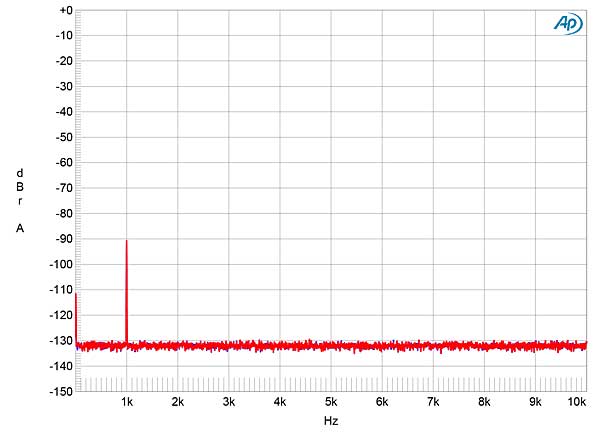
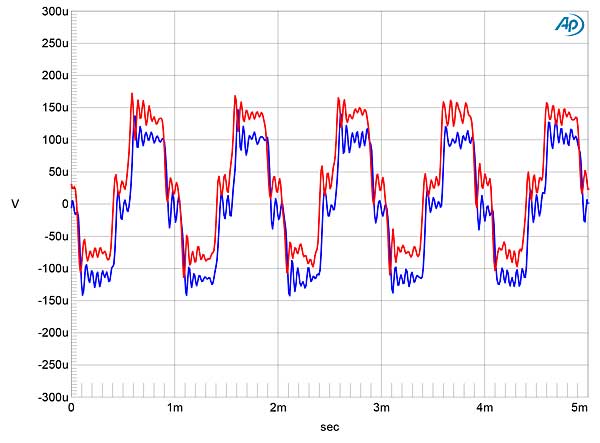
Harmonic distortion was very low (fig.7), with the third harmonic of a 50Hz tone the highest in level at just –104dB (0.0006%). But this graph, too, suggests the presence of spuriae at 100Hz and its multiples. Intermodulation distortion (not shown) was extremely low, with the difference product at 1kHz resulting from an equal mix of 19 and 20kHz tones lying almost 120dB down. Tested with 16-bit J-Test data (fig.8), the Mohican showed superb rejection of spuriae related to word-clock jitter, with all the odd-order harmonics of the LSB-level, low-frequency squarewave at the correct level (green line).
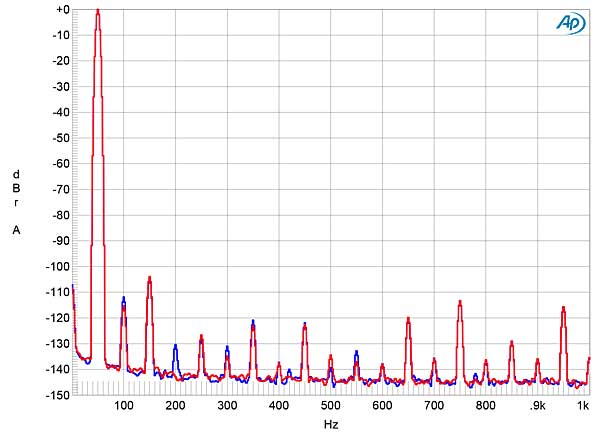

Other than those 100Hz-related spuriae, which are very low in level, and the deemphasis error, which these days is probably irrelevant, Hegel's Mohican CD player demonstrates appropriate audio engineering.—John Atkinson
Footnote 2: It turned out that these spuriae were encoded on the CBS test disc: see my further tests in response to the Manufacturer's Comment.

..but I just can't see buying a CD player these days especially one that costs five grand

I would buy one if it had capacity to connect from external sources to its DAC. If not, not sure why anyone would pay $5k for a CD player without that feature. Even a late adopter like myself to computer audio now sees the need for all new CD players to offer. Still, nice machine and quality made in Norway, suppose Hegel thinks there are still people who only listen to CD's, in fact, they are not the only manufacturers that offer a stand alone CD player, I recall Parasound offering a CD player without any inputs for external computer sources, wonder how well they sell. I do hope Hegel sells more than seven.

I am right there with ya- HR.
I collect 1st pressing CDs for the same reason you collect the Vinyl editions. Very nice coverage and review of the Hegel cd spinner.
Good to read about it being made in Norway and NOT junk-sourced to china (like so many of its competitors).

..but the way I listen is ripping them and loading on a NAS drive connected to a music server. Much easier to navigate your music and with a super high quality DAC better sound..

Mr. Reichert: Now this (review) was much better; deftly navigating the torturous waters of both reviewing sensitivity and drawing comparisons.
But here, you've done reasonably well (as opposed to the other one I lambasted you on).
It would have been instructive if you experimented with PC's, IC's or other combinations with the Hegel Mohican.
I'm not even sure if you referenced the DAC-chip employed , or any other notable feature of the Mohican. I don't recall anything memorable.
In any case, the rightful 'takeaway' from this review is that the very 'up-to-date" Mytek "Brooklyn" slapped the Mohican back into yester-century, at less than half the price of the clearly over-priced Hegel.
Perhaps that eager show "smile" was meant to soften you up to some nice words about the Mohican, I'm pleased to see you did both that, and the right thing in drawing some comparisons.
peter jasz